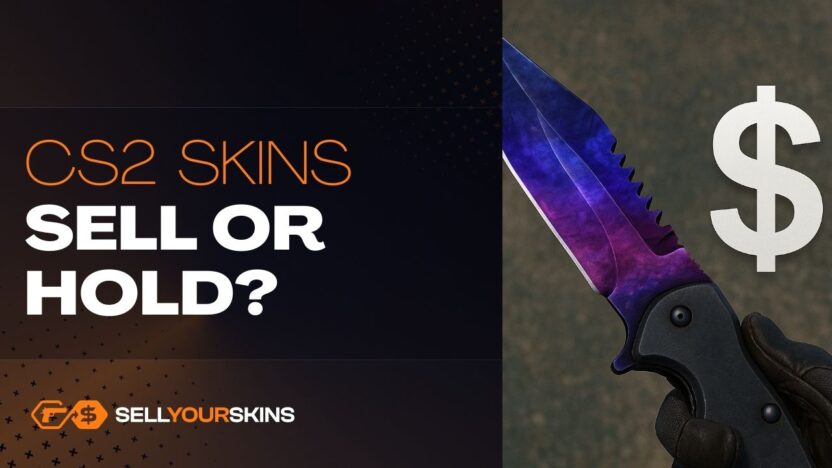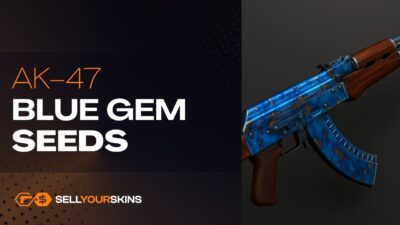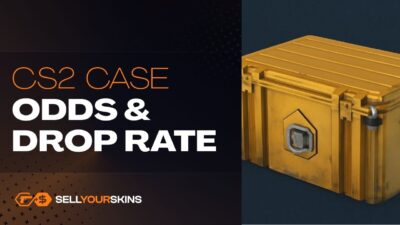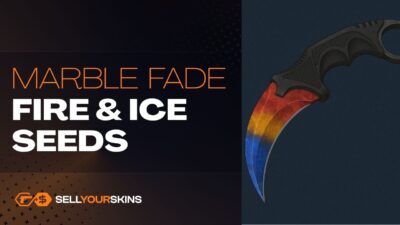The CS2 skin market in 2025 is more active than ever, with millions of dollars traded monthly on the Steam Community Market and third party platforms. Skins have proven to be more than cosmetic items – they’re also speculative assets that can appreciate in value. Deciding whether to sell immediately or hold for the long term depends on market conditions, rarity, demand, and the type of skin you own.
Immediate Sale – When It Makes Sense
In many cases, the best time to sell is right after receiving the skin – especially for newly released items. The reason is simple: early demand is extremely high while supply is still limited. For example, when the Kilowatt Case dropped in February 2024, Factory New AK-47 | Inheritance sold for over $1,000 in the first days. Three months later, the same skin dropped to $300-$350 as more supply flooded the market.
Best cases for immediate selling:
- New operation / case releases – Players rush to acquire the newest designs for prestige.
- Hype driven price spikes – Streamers or pro players using a certain skin can cause short-lived demand surges.
- Non-rare patterns or high floats – Lower visual appeal means they won’t appreciate as much long term.
In these scenarios, holding often leads to losses as prices normalize within weeks.
Long Term Hold – When Patience Pays
Some skins steadily rise in value over months or years, especially when tied to discontinued content. A prime example is the CS:GO Cobblestone Collection, which included the AWP | Dragon Lore. After the map was removed from active duty and drops stopped, the skin’s price tripled within four years.
Other classic examples:
- Operation Hydra skins – Some appreciated by over 200% between 2018–2023.
- Souvenir skins from discontinued map pools – Limited availability drives collector interest.
- Gem tier Dopplers – Ruby, Sapphire, and Black Pearl knives consistently gain value due to rarity.
Best cases for long term holding:
- Skins tied to removed cases / collections – Supply is fixed and only decreases as skins are banned or lost.
- High demand designs with cultural relevance – AK-47, AWP, M4A1-S in popular patterns tend to be evergreen.
- Perfect or rare patterns / floats – 0.00 float, pattern index gems, or StatTrak versions can command huge premiums years later.
Market Timing – Reading the Cycles
The CS2 skin economy has seasonal and event driven cycles:
- Post Major Dip – After a CS2 Major, souvenir package openings spike, flooding the market and lowering prices. Best time to buy for long term holds.
- Operation Announcements – Players sell skins to fund operation passes, often creating temporary dips in unrelated items.
- Summer & Winter Sales – Steam sales cause liquidity shifts; many players cash out, temporarily lowering skin prices.
- End of Case Supply – Once a case is officially retired and drops stop, prices tend to rise steadily.
For example: Prisma 2 Case was retired in late 2023; in early 2024, its price rose by 70% as drops ceased.
Risk Factors to Consider
While some skins appreciate significantly, holding always carries risks:
- Valve changes – Adjustments to drop rates, case reintroductions, or map rotations can impact rarity.
- Market saturation – Overproduction of a skin during an active drop period can stall appreciation for years.
- Liquidity issues – Ultra high value skins may take months to sell, especially above $10,000.
- Game popularity fluctuations – While CS2’s player base is strong, sudden shifts in interest can influence prices.
Practical Strategies for 2025
1. Flip New Drops Quickly
If you get a desirable new skin from a fresh case, list it immediately. Example: A Butterfly Knife | Ultraviolet Minimal Wear from the Kilowatt Case sold for $5,500 on day one, but by month three, the same knife sold for ~$3,800.
2. Accumulate Discontinued Content
Focus on collections that have been removed from drops – like the Train Collection or certain case exclusives. These are safer long term bets as supply is fixed.
3. Diversify
Don’t tie up all value in one skin. Spread across multiple items – some for short term flips, some for long term holds.
4. Track Pro Player Influence
If a high profile player uses your skin on stage, short term demand can spike. Be ready to sell quickly.
5. Monitor Case Retirements
Valve rarely announces retirements, but once a case moves to the “rare drop” pool, supply slows and prices tend to rise.
Selling vs Holding – Quick Decision Matrix
Sell if:
- The skin is from a new case / operation.
- Demand spike is hype based.
- Float / pattern isn’t special.
- Price has already doubled / tripled within a week of drop.
Hold if:
- It’s from discontinued / retired content.
- Float / pattern is exceptional.
- Demand is stable and not hype driven.
- Price history shows steady growth.
In Other Words…
In 2025, whether you sell or hold CS2 skins should depend on the nature of the skin, current market conditions, and your investment horizon. For fast moving, hype driven drops, immediate selling maximizes returns before prices stabilize. For discontinued, rare, or culturally significant skins, holding often delivers the biggest gains over time. The smartest traders blend both approaches – flipping for quick profit while building a portfolio of long term assets that benefit from CS2’s enduring popularity and player driven economy.



